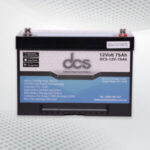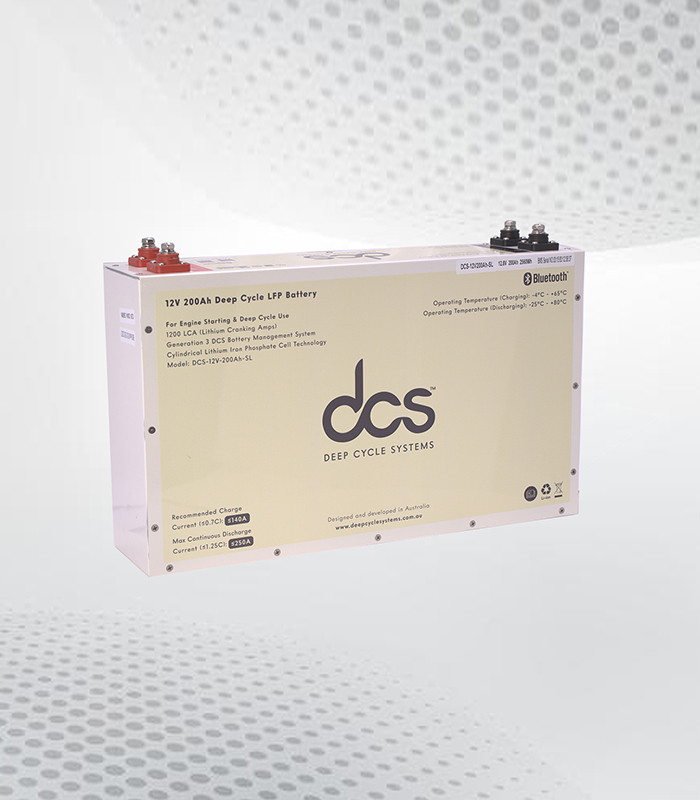When powering your electronic devices on the go or during a power outage, a portable inverter can be a lifesaver. Portable inverters are versatile devices that convert DC power from a battery into AC power, allowing you to charge your phone, laptop, or other devices wherever you are. In this blog post, we will explore the benefits of choosing a portable inverter over traditional generators, key features to look for when buying one, top use cases for portable inverters in daily life, maintenance tips, popular models on the market, and safety precautions to keep in mind.
Understanding What a Portable Inverter Is and How It Works
A portable inverter is essentially a bridge between the conventional DC power source, such as a car battery or solar panel, and the AC-powered gadgets we use daily. It operates by taking direct current (DC) and transforming it into alternating current (AC), the standard electrical current used by most household appliances and electronics. This transformation is achieved through an intricate electronic process where the DC input is increased in voltage, converted into AC, and then adjusted to a suitable voltage for your devices.
The core of a portable inverter’s functionality lies in its internal circuitry. It begins with a DC input, fed into an oscillator that generates a high-frequency AC signal. This signal is amplified in power through a transformer, converting it to a higher or lower voltage as needed. The current is then rectified and filtered to produce a clean AC output, mimicking the power you’d get from a standard household outlet.
This capability to convert power types makes portable inverters incredibly versatile. They have various output options, including traditional electrical outlets and USB ports, to accommodate various electronic devices. Some models even feature built-in batteries, enhancing their portability by allowing them to store energy, thus serving as a power source even without an immediate DC input.
Portable inverters stand out for their convenience. They offer a reliable power solution whether you’re off-grid or in need of emergency power. Their compact size and lightweight design underscore their appeal, providing an accessible way to ensure you and your devices stay powered up no matter where you are.
Advantages of Using a Portable Inverter Over Traditional Generators
Opting for a portable inverter over a traditional generator presents many benefits that cater to the modern user’s need for convenience, efficiency, and environmental friendliness. One of the primary advantages of portable inverters is their quiet operation. Unlike the loud, disruptive noise commonly associated with generators, portable inverters operate with minimal noise, making them ideal for use in quiet neighbourhoods or tranquil outdoor settings where you wouldn’t want to disturb the peace.
Furthermore, portable inverters boast superior fuel efficiency. They are designed to adjust their power output to match the load requirement, which means they consume less fuel when powering fewer or less demanding devices. This not only saves on fuel costs but also minimizes the frequency of refuelling, offering a more convenient and cost-effective solution for extended use.
Emissions are another area where portable inverters shine. They produce significantly fewer emissions than traditional generators, aligning with the growing consumer preference for eco-friendly power solutions. This reduced environmental impact makes portable inverters more suitable for outdoor activities and areas with strict emission regulations.
In addition, portable inverters’ compact and lightweight nature enhances their portability. This makes them far easier to transport and store than bulky generators, allowing users to take them camping, to outdoor events, or anywhere on-the-go power is needed.
Lastly, portable inverters’ clean and stable power output ensures the safe operation of sensitive electronics, such as smartphones and laptops, which might be damaged by the fluctuating power typically produced by conventional generators. This key advantage underscores the suitability of portable inverters for a wide range of modern electronic devices, ensuring they remain charged and operational no matter where you are.
Key Features to Look for When Buying a Small Portable Inverter
Power Output Capacity
One of the most critical features to consider is the small portable inverter‘s power output capacity. This determines how many and what type of devices you can charge simultaneously. Look for an inverter that matches your power needs; for instance, if you intend to power a laptop, smartphone, and a small cooler, calculate the total wattage required to ensure the inverter can handle it.
Port Selection and Variety
The types and numbers of ports available on a portable inverter are essential for flexibility in charging various devices. Ensure it has a mix of AC outlets, USB ports, and possibly even USB-C ports for modern electronics. This variety will allow you to charge multiple devices simultaneously without needing an adapter.
Battery Life and Charging Options
For inverters with built-in batteries, assess the battery life and how easily the inverter can be recharged. Some models offer solar charging capabilities, which are invaluable for off-grid use or during extended outdoor activities. Additionally, check how long it takes the inverter to recharge from zero to full capacity.
Durability and Design
Given that portable inverters are often used in various environments, including outdoor settings, choosing one designed to withstand a bit of wear and tear is crucial. Look for models with rugged designs, water resistance, and dustproof features. Compact and lightweight designs enhance portability but not at the expense of durability. Additionally, consider inverters with LED indicators or displays for real-time information on power usage and battery levels.
Top Use Cases for Portable Inverters in Daily Life
Thanks to their versatility and convenience, portable inverters have become an indispensable tool in our daily lives. Here are some of the top use cases:
Emergency Power during Outages
When unexpected power outages strike, a portable inverter can keep essential devices like refrigerators, lights, and medical equipment running, minimizing disruptions to your daily routine.
Outdoor Adventures
Whether camping, hiking, or enjoying a day at the beach, portable inverters can power small appliances, charge mobile devices, and run entertainment systems, enhancing your outdoor experience without needing a fixed power source.
Work on the Go
For professionals who need to work remotely, portable inverters can power laptops, printers, and other office equipment. This makes it possible to set up a mobile office anywhere, from a park to a construction site.
Road Trips and RV Living
For those who love to travel, portable inverters can transform your vehicle or RV into a home on wheels, powering kitchen appliances and charging devices and ensuring comfort and convenience on long journeys.
Backup Power for Solar Energy Systems
Homeowners with solar panels can use portable inverters as a backup, ensuring that excess energy generated during the day can be used efficiently at night or during cloudy days.
These diverse applications showcase how portable inverters have become integral to modern life, providing a reliable power source whenever and wherever it’s needed.
Maintenance Tips to Keep Your 800 Watt Inverter Running Smoothly
Maintaining your 800 watt inverter prolongs its life and ensures it provides reliable power when you need it most. Here are some straightforward maintenance tips to follow:
Firstly, cleanliness is key. Ensure the inverter’s exterior is clean and free from dust and dirt. Use a soft, dry cloth to wipe down the surface. Avoid harsh chemicals or water, which could damage the inverter’s internal components.
Secondly, battery life is crucial for your inverter’s performance. If your model has a built-in battery, recharge it fully after each use to maintain health. For models that connect to external batteries, regularly check the terminals for corrosion and clean them as necessary. Always ensure the connections are tight and secure to prevent power loss.
Storing your inverter properly can also significantly impact its longevity. Keep it in a cool, dry place away from direct sunlight or extreme temperatures. This helps prevent any damage to the electronic components inside.
Lastly, adhere closely to the manufacturer’s guidelines for both usage and maintenance. This can include recommended operational limits, troubleshooting tips, and schedules for more thorough inspections or professional servicing.
By following these simple yet effective maintenance tips, you can help keep your 800-watt inverter in top condition and ready to supply power whenever you need it.
Comparing Popular Portable Inverter Models on the Market
As you dive into the portable inverter market, you’ll discover a wide range of options, each catering to different needs and preferences. Notable brands such as Goal Zero, Jackery, and Honda have established themselves as leaders in the field, offering durable, efficient, and user-friendlier products. Goal Zero’s offerings are renowned for their rugged design and solar charging capabilities, making them ideal for outdoor enthusiasts who value sustainability.
Jackery, on the other hand, strikes a balance between portability and power, with models like the Explorer series being particularly popular among travellers and outdoor adventurers for their compact size and reliable performance. Their fuel efficiency and quiet operation distinguish Honda’s inverters, attributes that stem from the company’s extensive experience in engine technology, making their models a preferred choice for those needing power in more serene environments.
When comparing these models, consider the specifics of their power output, which directly impacts what devices you can charge and for how long. Battery capacity is another crucial factor, as it determines the inverter’s ability to sustain power supply without recharging.
Additionally, the number and type of outlets provided will affect how versatile the inverter is in catering to different electronic needs. Portability, often influenced by the inverter’s weight and design, will dictate how easily you can transport your power source to various locations. Analyzing these key aspects will guide you to the portable inverter model that best fits your requirements, ensuring you have the right balance of power, convenience, and sustainability at your fingertips.
Safety Precautions When Using a 24v Inverter Charger
Read the Manual
Before using your 24v inverter charger, it’s essential to thoroughly read the manufacturer’s manual. Each model may have specific operational guidelines or safety warnings that you need to be aware of to prevent misuse.
Proper Ventilation
Inverters can generate heat during operation. To prevent overheating, ensure your 24v inverter charger is placed in a well-ventilated area. Avoid enclosing it in tight spaces or exposing it to direct sunlight for extended periods.
Correct Installation
Installing your inverter charger correctly is crucial for safety. This includes securing it stable and ensuring all electrical connections are tight and correct. If unsure, seek professional assistance to avoid electrical hazards.
Avoid Water and Moisture
Keep the inverter charger dry and away from water or moisture sources. Exposure to water can lead to electrical shorts, damage the unit, or cause injury. If using outdoors, ensure it’s in a sheltered location protected from the elements.
Conclusion
In summary, the role of portable inverters in our modern lives cannot be overstated. They bridge the gap between the need for constant connectivity and the reality of unpredictable power availability. Whether it’s ensuring that essential devices remain operational during emergencies or enhancing the experience of outdoor adventures, portable inverters are indispensable. By carefully selecting an inverter that aligns with your power needs, paying attention to its features, and adhering to recommended maintenance practices and safety measures, you can maximize the benefits of your device. Remember, the right portable inverter offers convenience and peace of mind, knowing that power is available at your fingertips wherever you go.
FAQs
Can I use a portable inverter to run heavy appliances like refrigerators?
Yes, you can use a portable inverter to run heavy appliances. Still, you need to ensure that the inverter’s power output capacity matches or exceeds the appliance’s starting and running wattage.
How long can a portable inverter last on a single charge?
A portable inverter’s duration depends on its battery capacity and the total load of the powered devices. Generally, the more devices or the higher the power demand, the shorter the battery life.
Is it possible to charge a portable inverter with solar panels?
Yes, many portable inverters are compatible with solar panel charging. However, you need to check if the inverter supports solar input and may need to purchase solar panels separately.
| Related Business Listings |
| Contact Directory |
| Local Business Profiles |




